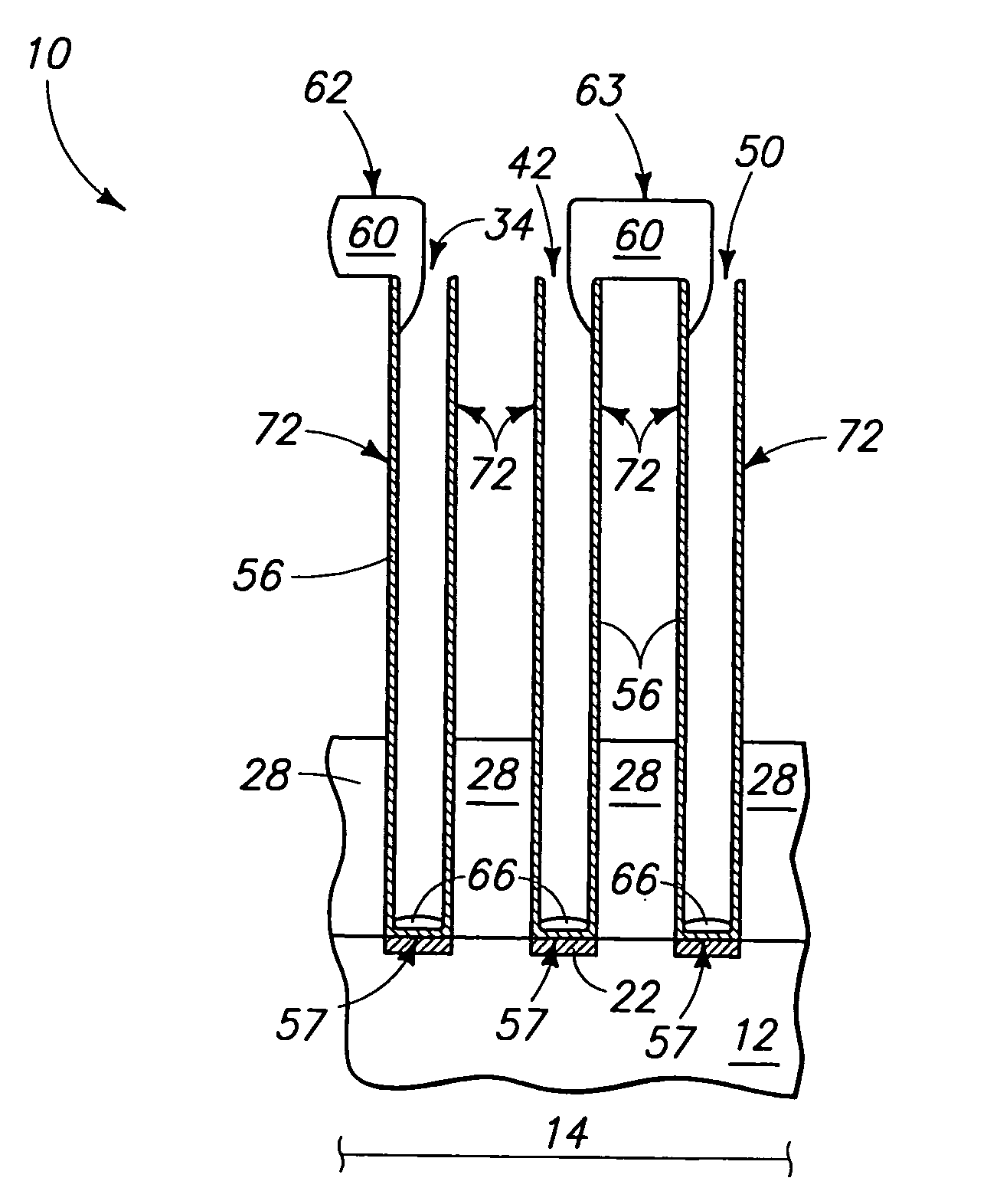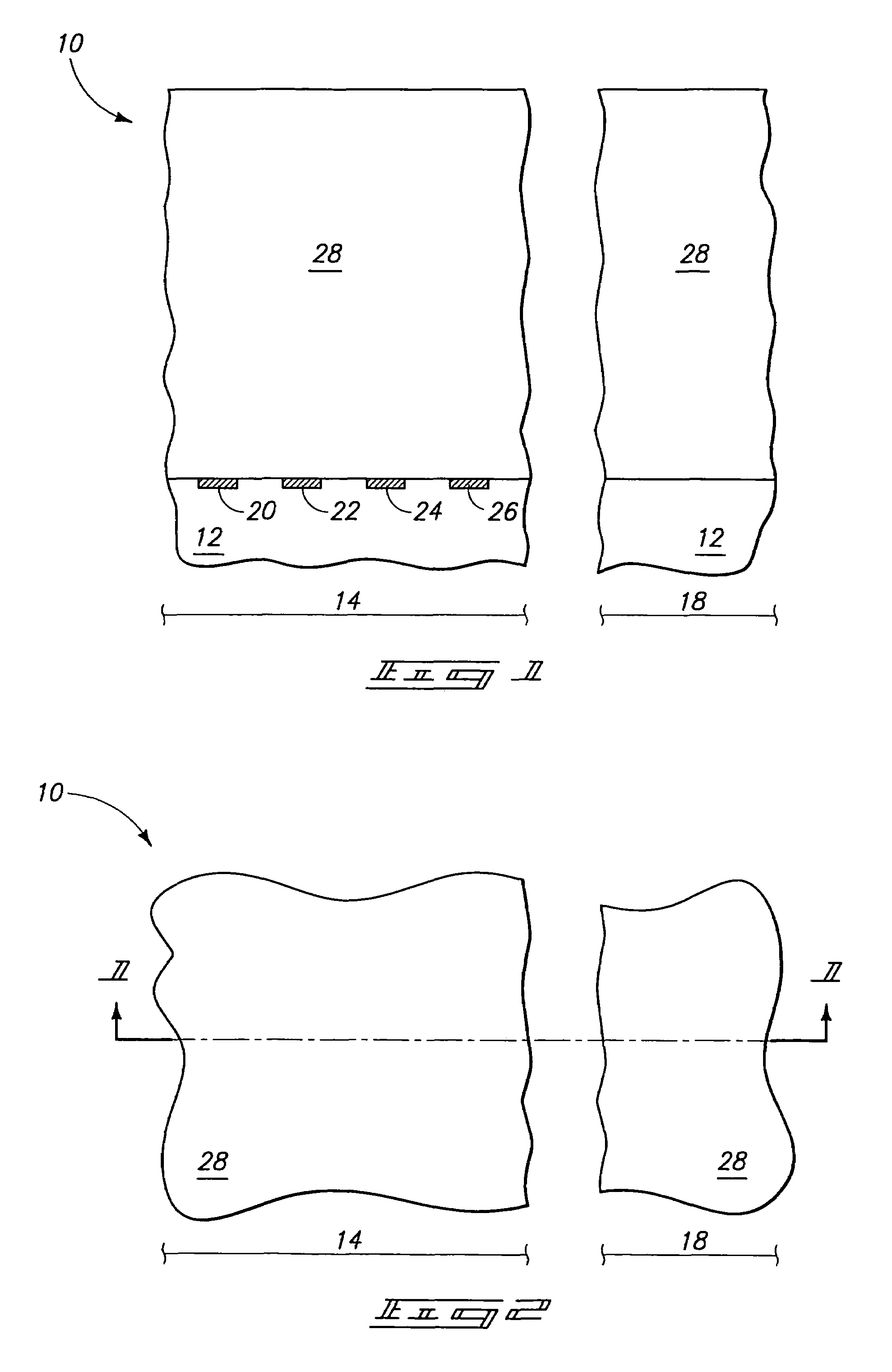Methods of forming a plurality of capacitors
a capacitor and electrode opening technology, applied in the field of capacitor electrode opening formation methods, can solve the problems of not being able to fabricate integrated circuitry, exceeding the depth of these peripherally formed electrodes, and not being able to uniformly form the electrode openings of the capacitor being fabricated
- Summary
- Abstract
- Description
- Claims
- Application Information
AI Technical Summary
Benefits of technology
Problems solved by technology
Method used
Image
Examples
Embodiment Construction
[0029]This disclosure of the invention is submitted in furtherance of the constitutional purposes of the U.S. Patent Laws “to promote the progress of science and useful arts” (Article 1, Section 8).
[0030]Exemplary preferred embodiments of methods of forming a plurality of capacitors are described with reference to FIGS. 1-16. U.S. Patent Application Publication No. 2005 / 0054159 A1, entitled, “Semiconductor Constructions, and Methods of Forming Capacitor Devices”, filed Dec. 10, 2003, naming H. Montgomery Manning, Thomas M. Graettinger, and Marsela Pontoh as inventors, is hereby fully incorporated by reference as if included in its entirety herein.
[0031]Referring to FIG. 1, a semiconductor substrate in process in accordance with an aspect of the invention is indicated generally with reference to numeral 10. Such comprises a substrate 12 which in one exemplary embodiment comprises a semiconductor substrate, for example comprised of bulk monocrystalline silicon or other material. In th...
PUM
| Property | Measurement | Unit |
|---|---|---|
| thickness | aaaaa | aaaaa |
| thickness | aaaaa | aaaaa |
| thickness | aaaaa | aaaaa |
Abstract
Description
Claims
Application Information
 Login to View More
Login to View More - R&D
- Intellectual Property
- Life Sciences
- Materials
- Tech Scout
- Unparalleled Data Quality
- Higher Quality Content
- 60% Fewer Hallucinations
Browse by: Latest US Patents, China's latest patents, Technical Efficacy Thesaurus, Application Domain, Technology Topic, Popular Technical Reports.
© 2025 PatSnap. All rights reserved.Legal|Privacy policy|Modern Slavery Act Transparency Statement|Sitemap|About US| Contact US: help@patsnap.com



